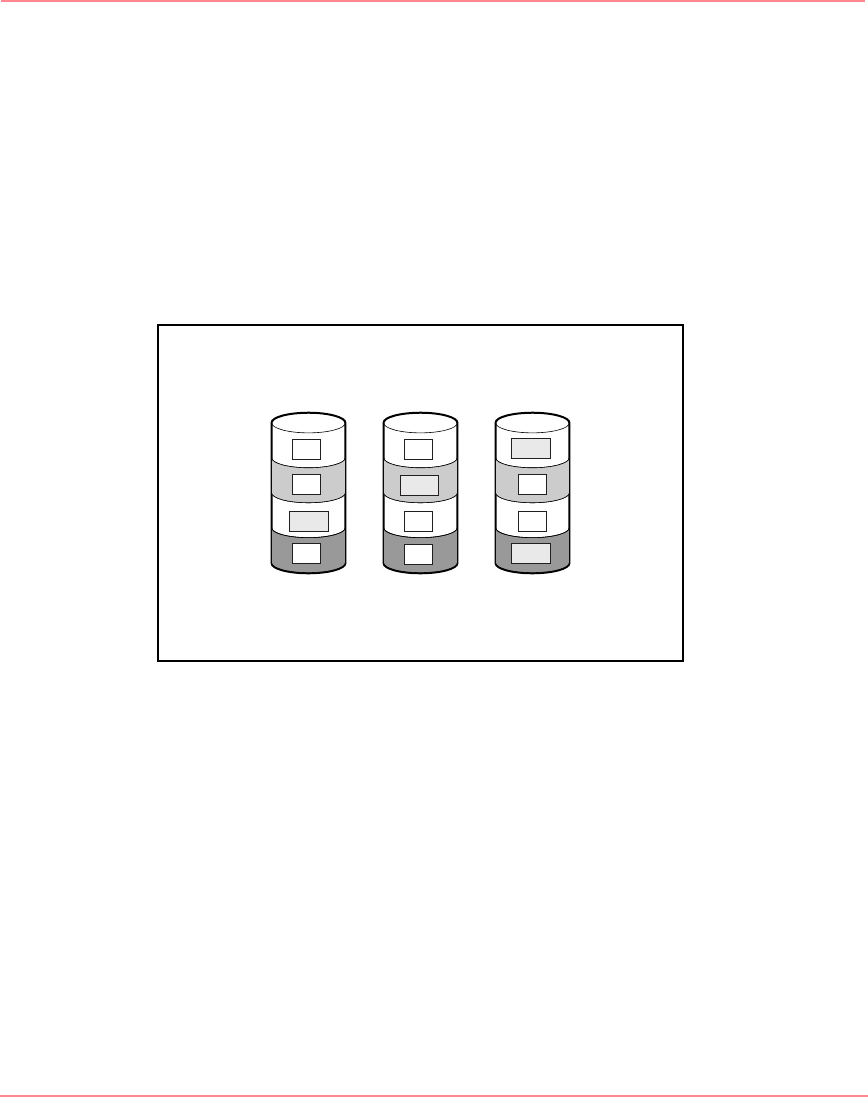User guide
Table Of Contents
- MSA1000 User Guide
- Contents
- About this Guide
- Chapter 1: Introduction
- Chapter 2: Operating System Specific Information
- Chapter 3: MSA1000 Setup and Sample Configurations
- Chapter 4: Operation and Management
- Chapter 5: Array Configuration Utility (ACU)
- Installing the ACU on the Server
- Accessing the ACU
- Description of Screen Regions
- Configuring a New Controller
- Modifying an Existing Controller
- Probability of Logical Drive Failure
- Chapter 6: Command Line Interface (CLI)
- CLI Overview
- CLI Setup
- Help Commands
- Display Commands
- Array Controller Configuration Commands
- LUN Management Commands
- Server Connection Commands
- Selective Storage Presentation/Access Control List Commands
- Appendix A: Regulatory Compliance Notices
- Appendix B: Electrostatic Discharge
- Appendix C: Specifications
- Appendix D: Hard Drive Arrays
- Appendix E: Recovering from Hard Drive Failure
- Appendix F: Controller Display Messages
- Appendix G: Recovery ROM and ROM Cloning
- Appendix H: SCSI ID Assignments
- Index

Hard Drive Arrays
179Modular SAN Array 1000 User Guide
RAID 5—Distributed Data Guarding
By this method, a block of parity data is calculated for each stripe from the data
that is in all other blocks within that stripe. The blocks of parity data are
distributed over every physical drive within the logical drive (refer to Figure 67).
When a physical drive fails, data that was on the failed drive can be calculated
from the user data on the remaining drives and the parity data. This recovered data
is usually written to an online spare in a process called a rebuild.
This configuration is useful when cost, performance, and data availability are
equally important.
Figure 67: Distributed data guarding, showing parity information (Px,y)
Advantages
■ High read performance
■ No loss of data if one physical drive fails
■ More drive capacity usable than with RAID 1+0—parity information requires
only the storage space equivalent to one physical drive
Disadvantages
■ Relatively low write performance
■ Loss of data if a second drive fails before data from the first failed drive is
rebuilt
S1
S2
S3
S4
B1
B3
P5,6
P3,4
P1,2
P7,8
B7
B2
B5
B8
B4
B6
230941-005_MSA1000_UG.book Page 179 Thursday, April 17, 2003 5:53 PM










